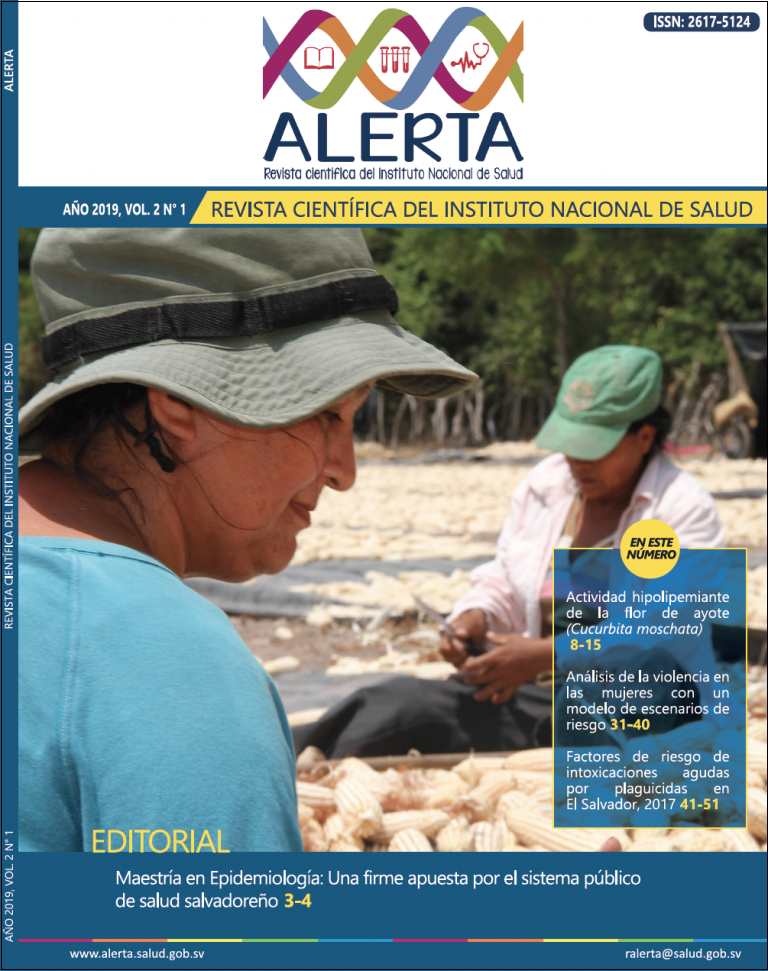Ligadura del conducto arterioso en recién nacidos prematuros: experiencia del Hospital Nacional de la Mujer
DOI:
https://doi.org/10.5377/alerta.v2i1.7536Resumen
Introducción. El ductus arterioso es una estructura que en la vida fetal se origina del sexto arco aórtico izquierdo embrionario y su función es primordial para la vida del feto. Posterior al nacimiento, su permeabilidad y persistencia se considera una cardiopatía y debe tratarse. Materiales y métodos. Se revisaron 18 expedientes médicos de pacientes con ductus arterioso de repercusión hemodinámica sometidos a cirugía. Todos los pacientes fueron abordados por la técnica de toracotomía lateral izquierda y se realizó doble ligadura al conducto. El tiempo postoperatorio y sus cuidados se cumplieron en la unidad de cuidados intensivos neonatales. Resultados. El total de pacientes operados fue de 18. El rango de pesos del grupo operado se encontraba entre 696 y los 2000 gramos. La edad gestacional se encontraba entre las 24 a 34 semanas. Se operaron 12 pacientes del sexo femenino y 6 masculinos. Se presentaron complicaciones postoperatorias en 5 casos. Tres pacientes tuvieron falla cardíaca que se trató de forma oportuna y dos casos terminaron con un ductus arterioso permeable residual luego de la ligadura. Fallecieron 3 pacientes sometidos a cirugía, pero la causa de muerte se debió a procesos infecciosos (un caso de neumonía nosocomial y dos por sepsis). Conclusiones. Valorando los riesgos versus los beneficios de la ligadura del ductus arterioso permeable, esta medida de tratamiento ha resultado ser una opción válida, ya que en El Salvador no se cuentan con medicamentos en presentación parenteral (indometacina-ibuprofeno) para el cierre farmacológico de esta cardiopatía.
Palabras clave: prematurez, ligadura, ductus arterioso, El Salvador.
Descargas
1055
Descargas
Publicado
Cómo citar
Número
Sección
Licencia
Derechos de autor 2019 Francisco Javier Delgado Montano, James Parada Lorenzana

Esta obra está bajo una licencia internacional Creative Commons Atribución 4.0.
Declaración de privacidad:
Los artículos de Revista Alerta están publicados bajo una licencia creative commons 4.0 CC BY: https://creativecommons.org/licenses/by/4.0/

Los autores conservan todos sus derechos sobre la obra y acuerdan permitir que los artículos sean copiados y distribuidos por cualquier medio, siempre que se mantenga su autoría y reconocimiento de la publicación, sin otras restricciones adicionales.




